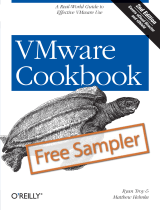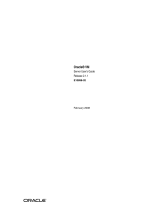
VMware Paravirtual SCSI Controllers.................................................................................................................... 29
Virtual Disk Provisioning............................................................................................................................................ 29
Virtual Machine Guest OS Settings........................................................................................................................ 30
Chapter 4: Host Configuration for Microsoft Windows................................................................. 31
Recommended Configuration Values Summary..........................................................................................................31
Fibre Channel Configuration........................................................................................................................................... 32
Pre-Requisites.............................................................................................................................................................. 32
iSCSI Configuration...........................................................................................................................................................32
Pre-Requisites.............................................................................................................................................................. 32
Multipathing Software Configuration...........................................................................................................................32
Configuring Native Multipathing Using Microsoft Multipath I/O (MPIO)..................................................... 33
Post-Configuration Steps - Using the PowerStore system....................................................................................34
Presenting PowerStore Volumes to the Windows Host.................................................................................... 34
Creating a File System............................................................................................................................................... 34
Chapter 5: Host Configuration for Linux......................................................................................35
Recommended Configuration Values Summary.........................................................................................................35
Fibre Channel Configuration...........................................................................................................................................36
Pre-Requisites..............................................................................................................................................................36
NVMe-FC Configuration on Linux Hosts............................................................................................................... 36
iSCSI Configuration...........................................................................................................................................................37
Pre-Requisites.............................................................................................................................................................. 37
Configuring the PowerStore Cluster Disk Device with iSCSI........................................................................... 37
Configuring the PowerStore Cluster Disk Device with iSCSI - Single Network Subnet Support............38
Multipathing Software Configuration...........................................................................................................................39
Configuring Linux Native Multipathing...................................................................................................................39
Configuring Device Mapper Multipathing (DM-multipathing) with MVMe-FC............................................40
Configuring Oracle ASM............................................................................................................................................. 41
Post-Configuration Steps - Using the PowerStore system....................................................................................42
Presenting PowerStore Cluster Volumes to the Linux Host.............................................................................42
Partition Alignment in Linux...................................................................................................................................... 42
Creating a File System............................................................................................................................................... 42
Chapter 6: Host Configuration for AIX.........................................................................................44
Recommended Configuration Values Summary.........................................................................................................44
Fibre Channel Configuration........................................................................................................................................... 45
Pre-Requisites..............................................................................................................................................................45
Queue Depth.................................................................................................................................................................45
Fast I/O Failure for Fibre Channel Devices...........................................................................................................46
Dynamic Tracking........................................................................................................................................................ 46
Fibre Channel Adapter Device Driver Maximum I/O Size..................................................................................47
Dell EMC AIX ODM Installation...................................................................................................................................... 47
Dell EMC AIX ODM Installation Requirements......................................................................................................47
Chapter 7: Host Configuration for Solaris....................................................................................49
Recommended Configuration Values Summary.........................................................................................................49
Fibre Channel Configuration...........................................................................................................................................50
Pre-Requisites..............................................................................................................................................................50
4
Contents






















